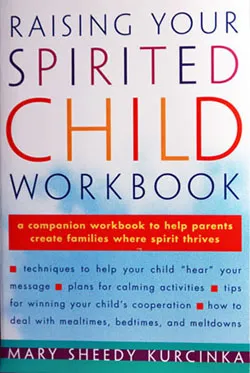If You Are Working From Home You Want To Read This Blog

Kelly collapsed into bed at 1:00 AM. Her “work” day had begun at 8:00 PM when the last of her three young children had fallen asleep. Despite her exhaustion she lay wide-eyed, her mind racing unable to sleep. A mere five hours later her youngest woke her with an ear piercing MOOOOOM! The rest of the day was a disaster as Kelly fought fatigue and refereed battles amongst the kids.
How does one care for children, especially young children, AND complete paid employment tasks?
The reality is, it is HARD and despite the best laid plans it is unlikely to go as you hoped, but through trial and error it can be “good enough.” There is no perfect plan. What works for one family, will not necessarily work for another. And strategies that were effective today, may much to your dismay, not be tomorrow, which is why it is important to develop a big cache of potential tactics.
Here are a few that we hope will be helpful:
1. Commit to doing one thing at a time – resist the urge to multi-task
It is tempting to try to do several things at once, but have you ever noticed that when you do, you do not feel good about any of it?Try your best to remain focused in the moment. Not only will you feel better, but it’s highly likely you’ll also be more efficient and effective.
- If you are caring for the children stay tuned in to them.
- If you are working, set it up so you are doing just that – and not caring for children.
How?
2. Work when the children are asleep.
Let’s be honest, caring for an infant or toddler is a full time job all on it’s own, especially the mobile little ones who if left unsupervised for a second are likely to be found on top of the counter, sharing the dog food dish with the dog, or splashing in the toilet. The good news is that given the opportunity infants and toddlers average sleep needs can range from 13-16 hours a day depending on the age and needs of the child. Thus, when it comes to working AND caring for this age group your safest bet is work while they sleep.
- If you know the children will awaken at 7:00 AM plan to waken yourself at 5:30 so you can get in an hour of work before their day begins. (Use the first 30 minutes for your own self-care.)
- Naps can provide you with another 2-3 hours of uninterrupted time.
- Grab a couple more hours after they are in bed and you have five to six focused hours. Not perfect, but surprisingly efficient.
3. If you are co-parenting determine ahead of time who is caring for children and who is meeting employment responsibilities.
Review together employment job tasks, including regularly scheduled conference calls. Establish a schedule of who is responsible for the children and who will be accomplishing “paid employment tasks.”
- Trying to decide five minutes before a ZOOM call is not the time to work this through.
- By designating parent and work hours you can schedule meetings and tasks accordingly.
- Have a back-up plan for the inevitable surprises. If you find yourself experiencing daily “surprises,” review and adjust your plan.
4. Create “offices” for preschoolers and older children.
If children are three or older you can add “hours” (okay maybe minutes) to your work time by encouraging independent work time in each individual’s “office.”
- Equip the “offices,” with paper, markers, a stapler, hole punch, scissors, tape, whatever other materials you can trust your child to use safely.
- Begin your day eating breakfast together and if possible, exercise together – preferably outside. This allows everyone’s needs to be met before you ask them to work independently.
- Set a color timer – you can order them from www.timetimer.com so the children will know how long everyone will be “working.”
- Some children may need a visual plan to help them stay focused. Create a 4-frame cartoon. In the first frame draw the face of a clock showing the beginning of office time. In the second frame draw the first activity your child wishes to do. In the third frame draw the next thing she will do. In the fourth frame draw a clock depicting when work will end. If you like, you can also add a fifth frame for the “reward” to follow - perhaps a family bike ride, or other shared activity. Set the timer where your child can see it – but not change it. Review the plan and begin.
- If 45 minutes is too long for your little ones start with 10-15 minutes and gradually lengthen the time. You want the children to be successful.
5. Establish planned breaks.
Even older children will be more relaxed if they know when you will be available for questions or just to check in.
- Plan a 15-20-minute break 2.5 hours after breakfast. Step away from your desk, sit down together and enjoy a mid-morning mini meal snack. (Be certain to include a little protein.)
- Older children may take on the responsibility of preparing the snack as either a task they do for the family – or one that is above and beyond and earns them cash!
- Stop at noon for lunch together.
- Two to three hours later stop again for a mid-afternoon min-meal break. These planned points of connection and respite help everyone remain in the “green zone” of calm energy.
6. Build your on-line support team.
During this time of restricted visits, occasionally toddlers and more successfully so, preschoolers and older children can interact via the internet with loved ones.
- These virtual helpers can be lifesavers who read, play games, and/or even teach your child. Again, not perfect, but at least you can count on a few minutes.
- Or, find videos you are comfortable allowing your child to watch while you focus on meeting the needs of a sibling. Audio books are another great resource. Yes, the children are watching more video than you may wish, but right now it’s a tool you can use as needed.
7. Protect your own sleep.
On average adults need 8.25 hours of sleep. Sleep is essential for focus and attention.
- Fiercely protect your sleep! Rather than staying up late to work, go to sleep. You will increase productivity exponentially by being well rested.
- That means if you wake at 5:30, your head needs to be on your pillow at 9:15 PM. You may not get there every night. That is okay, but without a clear goal you’ll be unlikely to ever hit it.
- A magical tool for increasing focus and attention in the afternoon is a 20-30-minute power nap. When the children go down for their naps, take the first 20-30 minutes to rest yourself. If you do not fall asleep, no worries. A few minutes of complete relaxation are restorative too.
8. Adjust expectations.
There are 24 hours in the day. Caring for children, and teaching children are FULL -TIME jobs! Add in eight or more hours of “other” work and something must give.
- Lower expectations related to paid work rather than the safety and well-being of yourself or your family. Hopefully, your boss is juggling too, and is open to realigning priorities.
9. Reflect on the benefits of working from home.
Work at home orders have changed everything. Established routines are in shambles. Responsibilities suddenly up for grabs. But with the changes have come benefits.
- No commute – add an hour or more to your day.
- Family meals are a daily reality. Who imagined the joy of an unrushed meal?
- There is delight in a middle of the day walk.
- The chance to throw a load of laundry in before 11:00 PM.
- And increased opportunities for “special moments,” with the children.
Put together your “tool kit.” Expect the best. Recognize when it is time to take a break or let loose with a family Tarzan scream - as in in no words, just a bellow. You are a problem-solving family. Dr. Mary and Lynn
Display All Posts
Search by Topic:
Popular Posts:
- When your child yells at you: Expecting and Coaching respectful behavior
- 5 Tips to Stop the 'Strike out Tantrums:' Hitting, Biting, Kicking and Name-calling
- Why is my child suddenly clingy?
- Ten Steps to a Peaceful Bedtime for Your Spirited Child
- When Your Child’s Meltdowns Might Ruin Vacation






